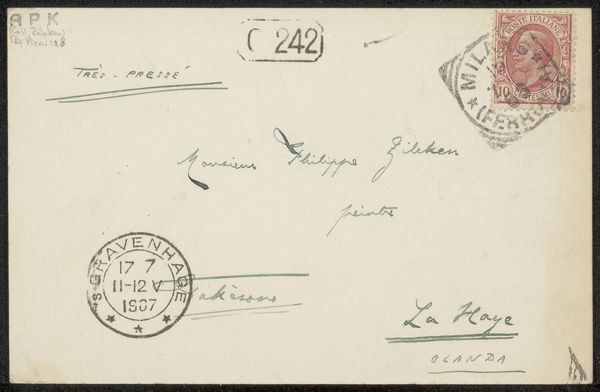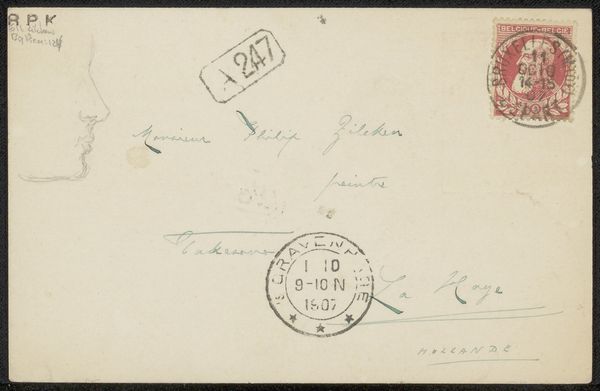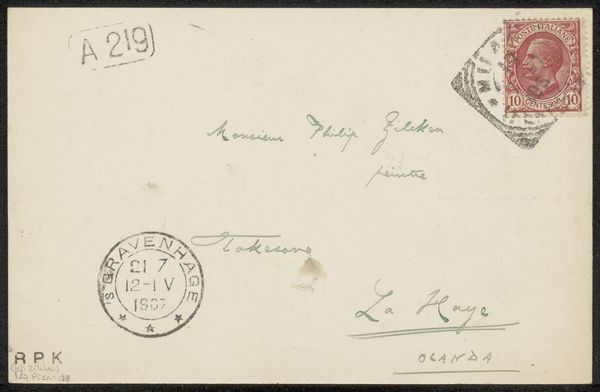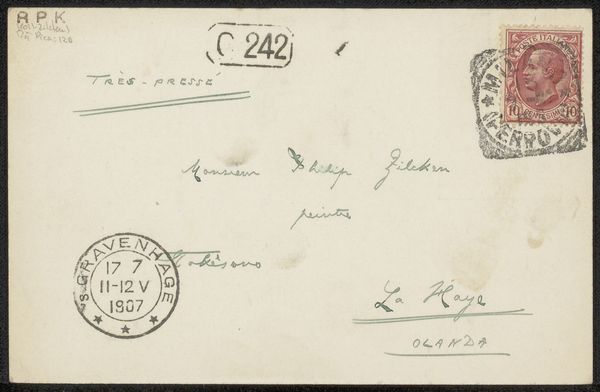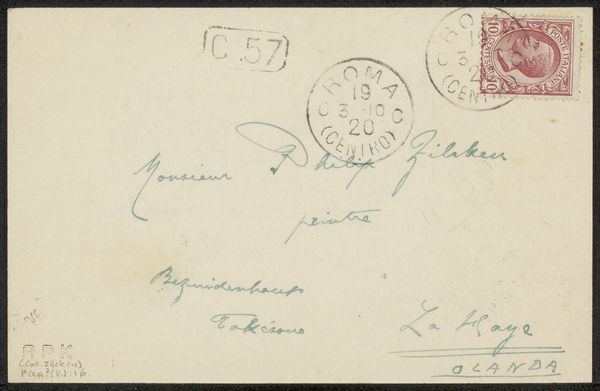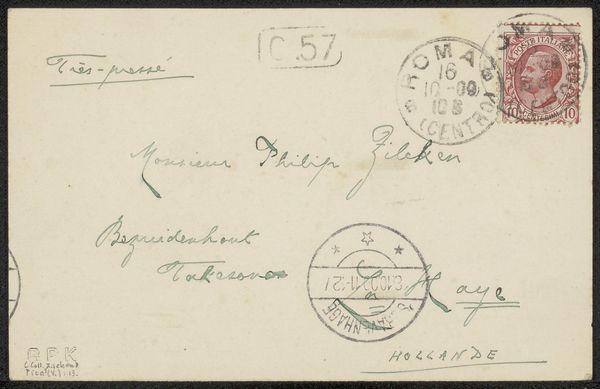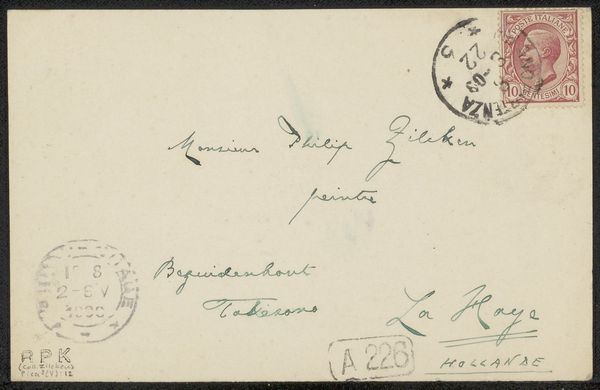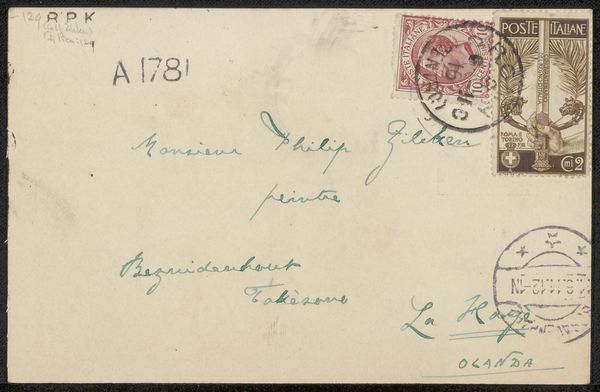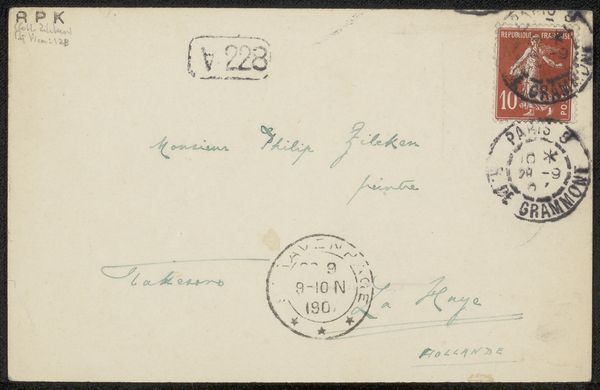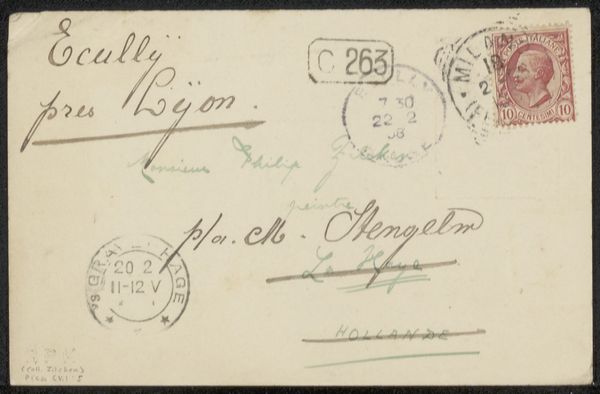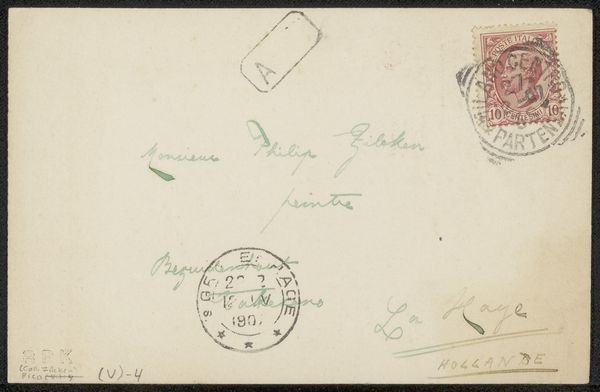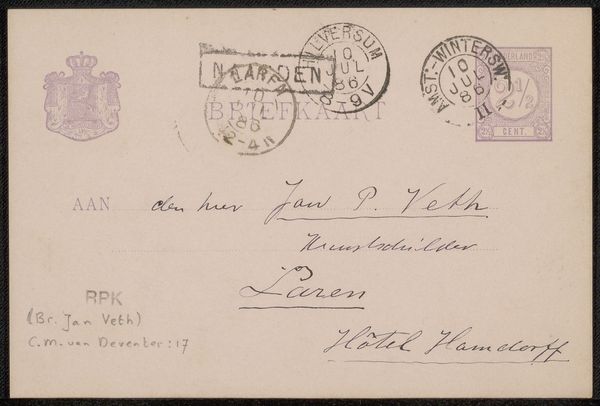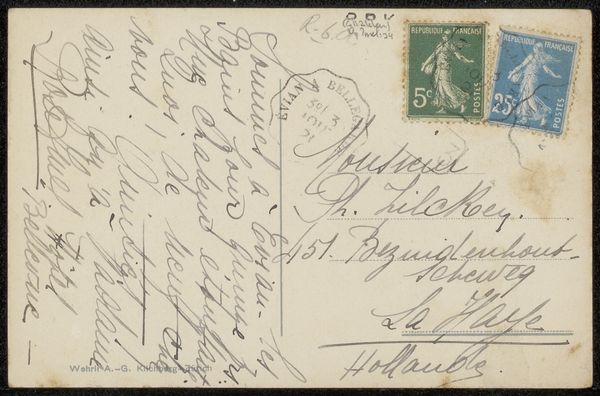
drawing, paper, ink
#
drawing
#
paper
#
ink
Copyright: Rijks Museum: Open Domain
Curator: Looking at "Brief aan Philip Zilcken," thought to be from 1907, what strikes you immediately about this humble ink drawing on paper? Editor: There's a delicate fragility to it, a quiet whisper from the past. The muted ink and aged paper convey a sense of intimacy, almost like eavesdropping on a private exchange. Curator: Precisely. What interests me is the evidence of production—the postal markings, the various inks used for addresses and stamps. It tells a story about communication, labor, and distribution at the time. Consider the material journey of this small piece of paper across geographic space. Editor: Those markings absolutely add a layer of meaning. That Italian stamp, the circular postmark... They're potent symbols of both officialdom and human connection, wouldn't you say? The stamp itself, the portrait of the Italian leader--who does that convey, do you think? Curator: Perhaps. What becomes intriguing is thinking about the labor involved in papermaking, ink production, the postal service's logistics. The artistic labor of producing the address labels using different inks on envelopes. Editor: But beyond the labor and material processes, these very visual elements also have their cultural resonance. Those particular fonts of handwriting, now faded and old; the solemn image on the stamp which represented state power. This piece allows us a glimpse of early 20th century Europe from both ends of its transmission--a cultural artifact in itself. Curator: And that stamp isn't simply an identifier of state power. It represents a payment for services, part of a massive bureaucratic system which then touches hands all across geographic regions. Consider, even the value encoded by color, printing process, the specific visual marker—all components that played their part to keep this thing moving in space and time. Editor: Absolutely! Every bit seems carefully placed. We have layers of signs and symbolism at play. Each a marker for that moment in time: early modern modes of global transfer. The envelope as vessel. Curator: It is quite something to trace the historical and material processes involved. A mundane postal interaction is rendered poignant with consideration for those very same global systems we're engaging with even today! Editor: I agree. It is remarkable how such a seemingly insignificant object like this little missive serves to reflect not only human connection, but echoes through our cultural memories even today.
Comments
No comments
Be the first to comment and join the conversation on the ultimate creative platform.
